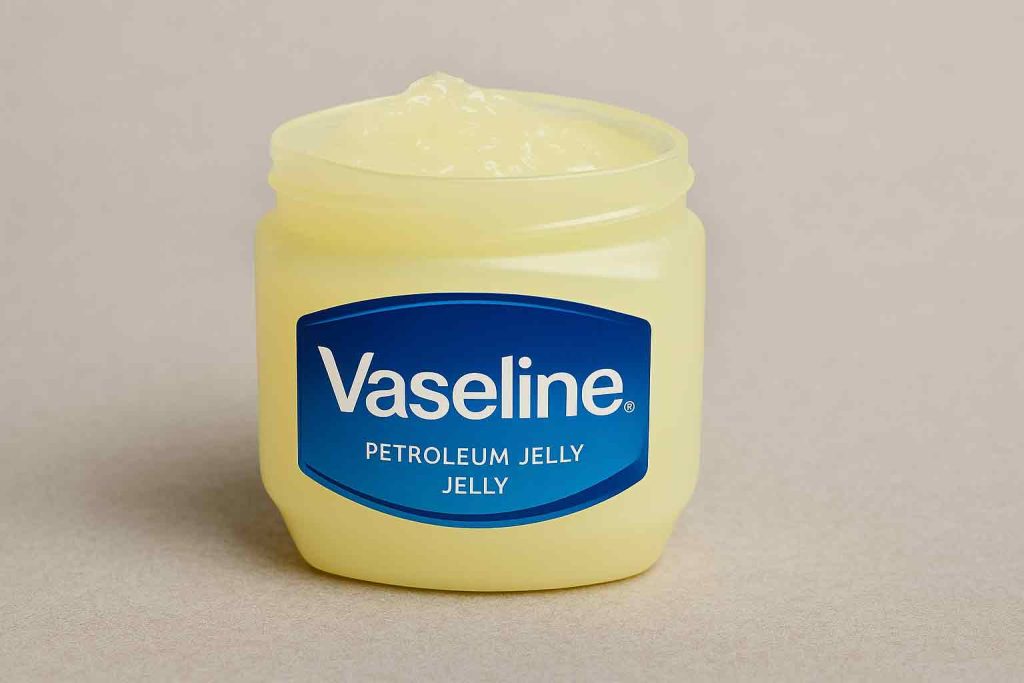Can I Put Vaseline on My Dog? Everything You Need to Know
Table of Contents
- 1. Introduction
- 2. What Is Vaseline?
- 3. Is Vaseline Safe for Dogs?
- 4. Common Uses of Vaseline on Dogs
- 5. Risks and Concerns of Using Vaseline
- 6. When Vaseline May Be Appropriate
- 7. Safer Alternatives to Vaseline for Dogs
- 8. What to Do If Your Dog Licks Vaseline
- 9. What Veterinarians Say About Vaseline Use
- 10. Frequently Asked Questions
- 11. Final Thoughts
- 12. Key Takeaways
1. Introduction
If you’re a dog parent, chances are you’ve wondered, “Can I put Vaseline on my dog?” Maybe your pup has dry paws, a cracked nose, or an itchy patch of skin. Vaseline, also known as petroleum jelly, is a common household item with soothing properties—but is it safe for canine use? This article explores the pros, cons, and best practices for using Vaseline on dogs.
2. What Is Vaseline?
Vaseline is the brand name for petroleum jelly, a semi-solid mixture of hydrocarbons. It’s widely used as a skin protectant in humans to treat dryness, minor cuts, and irritation. Its main purpose is to act as a barrier to lock in moisture and protect skin from further irritation.
3. Is Vaseline Safe for Dogs?
The short answer is: Vaseline is not toxic to dogs, but it’s not ideal either. It’s generally safe in small amounts and for topical use only. However, dogs tend to lick anything applied to their skin or paws, which means they’re likely to ingest some of it. Ingesting petroleum jelly can lead to digestive upset, including vomiting or diarrhea.
4. Common Uses of Vaseline on Dogs
Pet owners often consider using Vaseline for:
- Cracked paw pads: Especially in winter or after rough outdoor activity.
- Dry noses: Vaseline can temporarily relieve dryness and flakiness.
- Minor cuts or scrapes: As a moisture barrier to protect against infection.
- Skin irritation: Some people use it on rashes or itchy spots.
While these applications seem logical, there are better options designed specifically for pets.
5. Risks and Concerns of Using Vaseline
Although Vaseline may offer temporary relief, it’s not always the safest or most effective solution. Here’s why:
- Licking and ingestion: Dogs groom themselves and may consume Vaseline, leading to stomach upset.
- Blockage risk: Large amounts of petroleum jelly can cause intestinal blockages if ingested.
- Doesn’t heal: Vaseline doesn’t contain healing agents—it just forms a barrier.
- Can trap bacteria: If applied to a dirty wound, it may seal in harmful bacteria.
6. When Vaseline May Be Appropriate
Vaseline might be okay for:
- Short-term use: On dry areas when you’re in a pinch.
- Preventing chafing: In cold weather or rough terrain walks.
- Emergency moisture barrier: If no pet-safe balm is available.
Apply a very thin layer and supervise your dog to prevent licking.
7. Safer Alternatives to Vaseline for Dogs
Instead of Vaseline, try these pet-friendly alternatives:
- Dog-specific paw balms: Formulated to be lick-safe and moisturizing.
- Coconut oil: Natural, soothing, and usually safe for ingestion in small amounts.
- Shea butter: Provides moisture and skin nourishment.
- Aloe vera (pet-safe formulations): Known for its cooling and healing properties.
8. What to Do If Your Dog Licks Vaseline
If your dog licks a small amount, it’s usually not a cause for panic. Monitor them for signs of digestive upset, including:
- Diarrhea
- Vomiting
- Lethargy
If symptoms persist, or if a large quantity was consumed, contact your veterinarian immediately.
9. What Veterinarians Say About Vaseline Use
Most vets don’t recommend Vaseline for routine use on dogs. While it’s not dangerous in small doses, it doesn’t provide the benefits of products made specifically for pets. Your vet may suggest medicated ointments or balms with active healing ingredients instead.

10. Frequently Asked Questions
Can I put Vaseline on my dog’s dry nose?
Yes, in small amounts, but look for dog-safe balms made for this purpose.
Is Vaseline good for a dog’s paws in winter?
Temporarily, yes—but it’s better to use a dog-specific paw balm.
Can Vaseline help with hot spots?
No. Vaseline can trap moisture and worsen infections. Always consult a vet for hot spots.
11. Final Thoughts
So, can you put Vaseline on your dog? Technically, yes—but it’s not the best solution. While it’s not toxic and can be useful in emergencies, safer and more effective options exist. When in doubt, check with your veterinarian for the most appropriate treatment.
12. Key Takeaways
- Vaseline is not toxic but may cause digestive upset if ingested.
- Short-term use on dry skin is usually okay under supervision.
- Pet-specific balms and natural oils are safer alternatives.
- Consult your vet for persistent skin issues or wounds.







